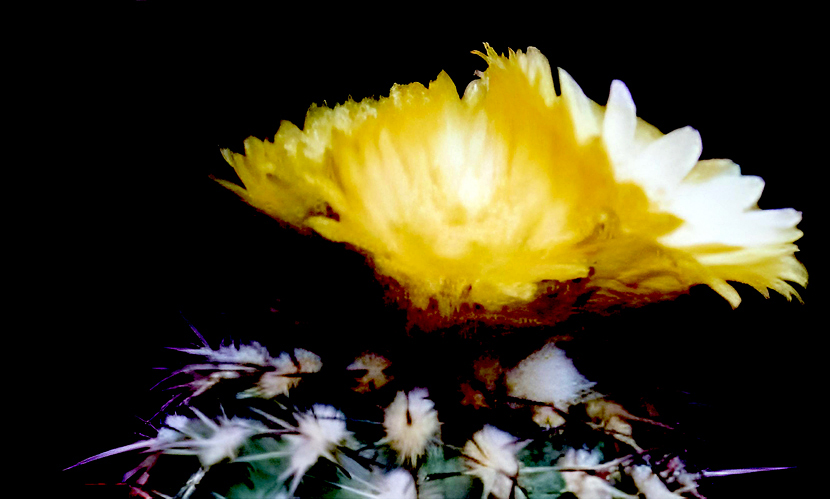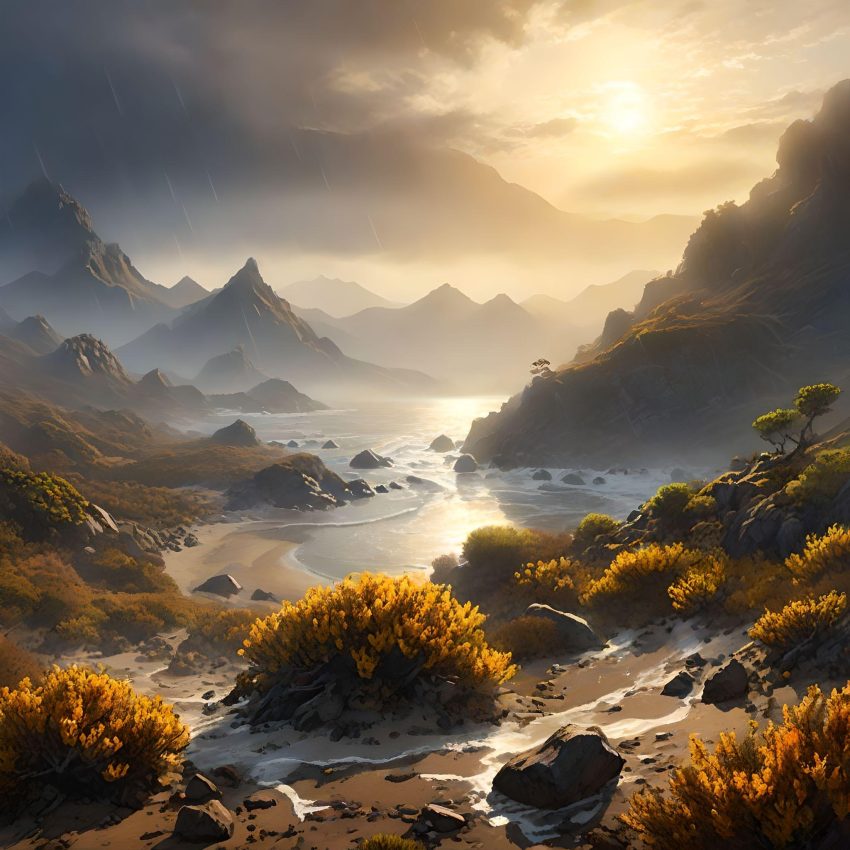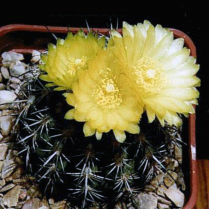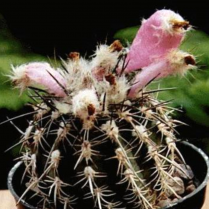By John Gamesby — UK
![]()
Featured image above: the AI refused to produce an image of this plant. However, it produced the image above in response to the opening paragraph of this article describing the natural habitat of this plant. Copyright The Amateurs’ Digest Archive 2024.

These plants grow in the most inhospitable place possible, the dry coastal deserts of Peru and Chile, a desert directly on the coast of the Pacific Ocean, where rain is almost unknown. The cold Humbolt current runs directly along the coast, especially during the winter months and produces the thick coastal fogs and biting wind which pull the fogs inland and fall as rain in the high Andes. In the summer there is only the scorching sun.
____________
Photos 1, 2 and 3, in that order:
Eriosyce (Islaya), islayensis (grandis)
Eriosyce (Islaya), islayensis (Fruits)
Eriosyce (Islaya) islayensis
Islayas grow in completely humus free sand or pebbly stratum. They are often half buried in the sand with only the top felty crown showing. Often the only things found growing in these harsh conditions are the islayas, a couple of Haageocereus (notably H. repens) and some tillandsias.
The islayas have a thick yellow or greyish-white felt growing in the crown. The flowers are usually greenish-yellow, yellow, or in Islaya divaricatiflora the flower can be green-yellow or red. The fruits have fine hairs with persistent flower remains with the upper tube bristles on the top of the fruit. When ripe, the fruit becomes elongated into a basally opening hollow fruit with the seeds in the top half of the papery thin, balloon-like pink fruits. The seeds are a dull black and can survive for many years and remain viable. The strong winds, always blowing inland, break off the dried papery fruits and carry them off. Then a small opening is torn in the base of the fruit and the seeds are dispersed.
In cultivation they do surprisingly well as long as a couple of rules are adhered to.
1) Use a purely mineral free draining compost. The two I have found to work well are sharp river sand (playpen sand USA. NOT silver sand) 3mm grit/gravel, 5-8 mm grit/gravel and a pinch of Gypsum in a ratio of 2:1:1 in a two gallon mix half a teaspoon of gypsum is well mixed in.
2) The other compost I have used with equally good effect is simply pure pumice.
Islayas are not very often offered in the trade but seed is often available. They offer no problems from seed and germinate quite readily. My plants are grown high up close to the glass for maximum sunlight in an unheated greenhouse; they literally bake in the summer and go well bellow freezing in winter but completely dry.
I water frugally from late May to late August early September. A fan is left running continually across the plants as I do with Copiapoa. This stops any still air around the plants and any scorching.
Islayas have had a bad reputation because plants were only available as imported ones often in very poor condition i.e. no roots and badly dehydrated. No wonder they were found difficult to re-establish.
There are many species named but there are probably only one or two true species.
© Copyright 1998 of THE AMATEURS’ DIGEST
Rescued from The Wayback Machine – vvv.com/~amdigest/
![]()




